Graffiti Souls
The minds behind Jet Set Radio.
Masayoshi Kikuchi and Ryuta Ueda first began working at Sega over 30 years ago, and both got their start at the company working on another underrated gaming franchise: Panzer Dragoon, an on-rails shooter that replaced futuristic sleek spaceships dogfighting alien crafts with a medieval-inspired setting and armored beasts of burden (hence, the franchise’s name).
In the year 2000, the two worked together once again to create Jet Set Radio, but had no idea how revolutionary their quirky concept would be. Kikuchi went on to continue his career at SEGA, working on other franchises like the Yakuza series (now known as Like A Dragon) and the fun platforming franchise Super Monkey Ball.
Ueda worked at SEGA for almost 20 years before leaving to pursue another opportunity outside the company, but eventually returned in 2021. Now reunited (and reportedly working on a Jet Set Radio reboot), Kikuchi and Ueda took some time to model the HIDDEN x Jet Set Radio collection and shed some light on what inspired them to create such a unique piece of gaming history.
“I have been thinking of creating a theme and an experience which the video games in the past had not yet portrayed. That was the experience as a hero—who burns with passion for the expression and live free beyond the social structure,” says Kikuchi. “And that was the lifestyle that I, myself longed for. As a Tokyoite, cutting out various sides of Tokyo and to build up the new world was a very thrilling experience too.”
For Ueda, who designed many of the characters and the game’s signature art style with Kazuki Hosokawa, the project was also a bit of a personal one, derived from things that he was already into.
“Jet Set Radio is inspired from the street culture, graffiti, and music that I was strongly influenced by back then, and to bring such new experience into game was the very starting point of it,” he says.
Further, the game was a way of rebelling against prevailing trends in video games.
“At the time, realistic graphics and serious storylines were becoming the mainstream in the game industry, however, I was thinking of making a game that was more free, and allowed players to express themselves, too,” adds Ueda. “Utilizing the ability of Sega’s new game console [Dreamcast], we explored visuals that had never been tried [cel-shading], that went against realistic graphics.”
As part of the HIDDEN x Jet Set Radio collection, the Beat Signature Tee and Gum Signature Tee not only reference the kanji-adorned costumes worn by both characters in the game—each one containing a stylized phonetic spelling of the character’s name—but also features an easter egg on the back of each tee.
Pulled straight from Ueda’s archive, never-before-seen concept art of both Beat and Gum give a bit of insight into how the characters went from 2-D sketches into fully-fledged designs.
The initial concepts already show how the colorful cast was integral to portraying the game’s premise of inspiring players to make their mark around Shibuya-Cho while sticking it to authority. The vibrant designs clearly pay homage to Harajuku trends of the era, but have become timeless in their own right.
“The players running around the city freely and leaving their own artworks [graffiti]—was an experience that I hoped the audiences could feel self-expression and a rebellious spirit from the game,” says Ueda.


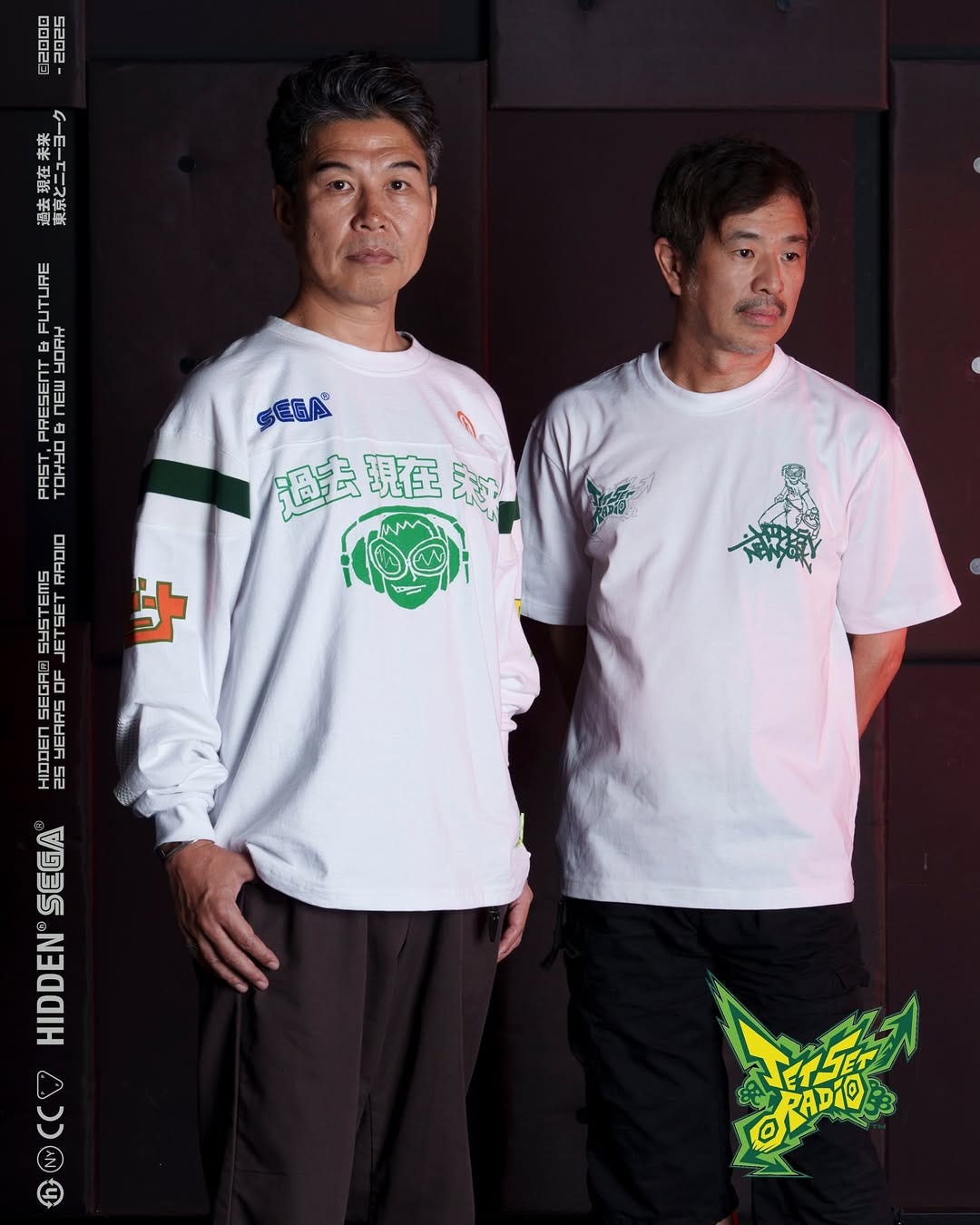
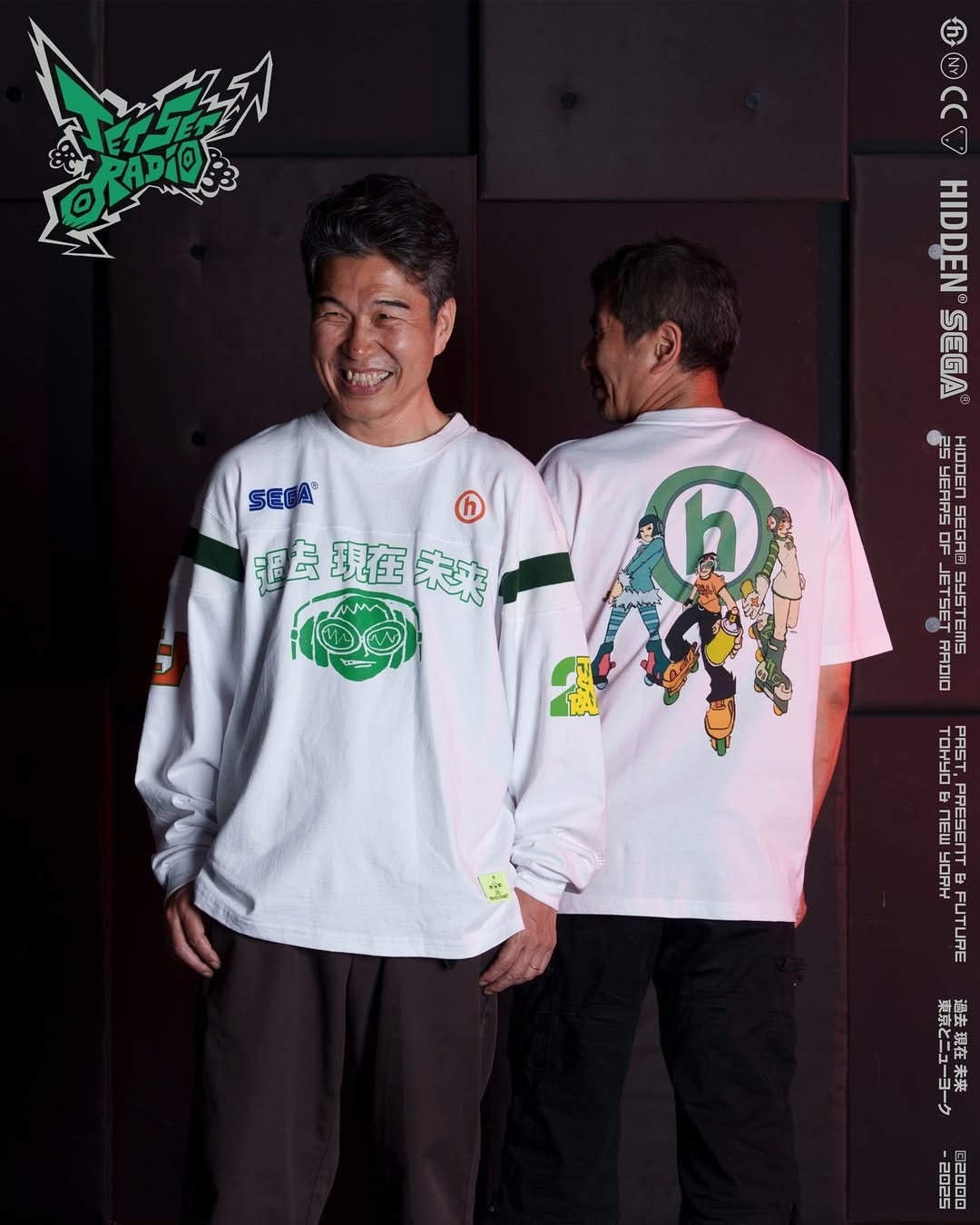
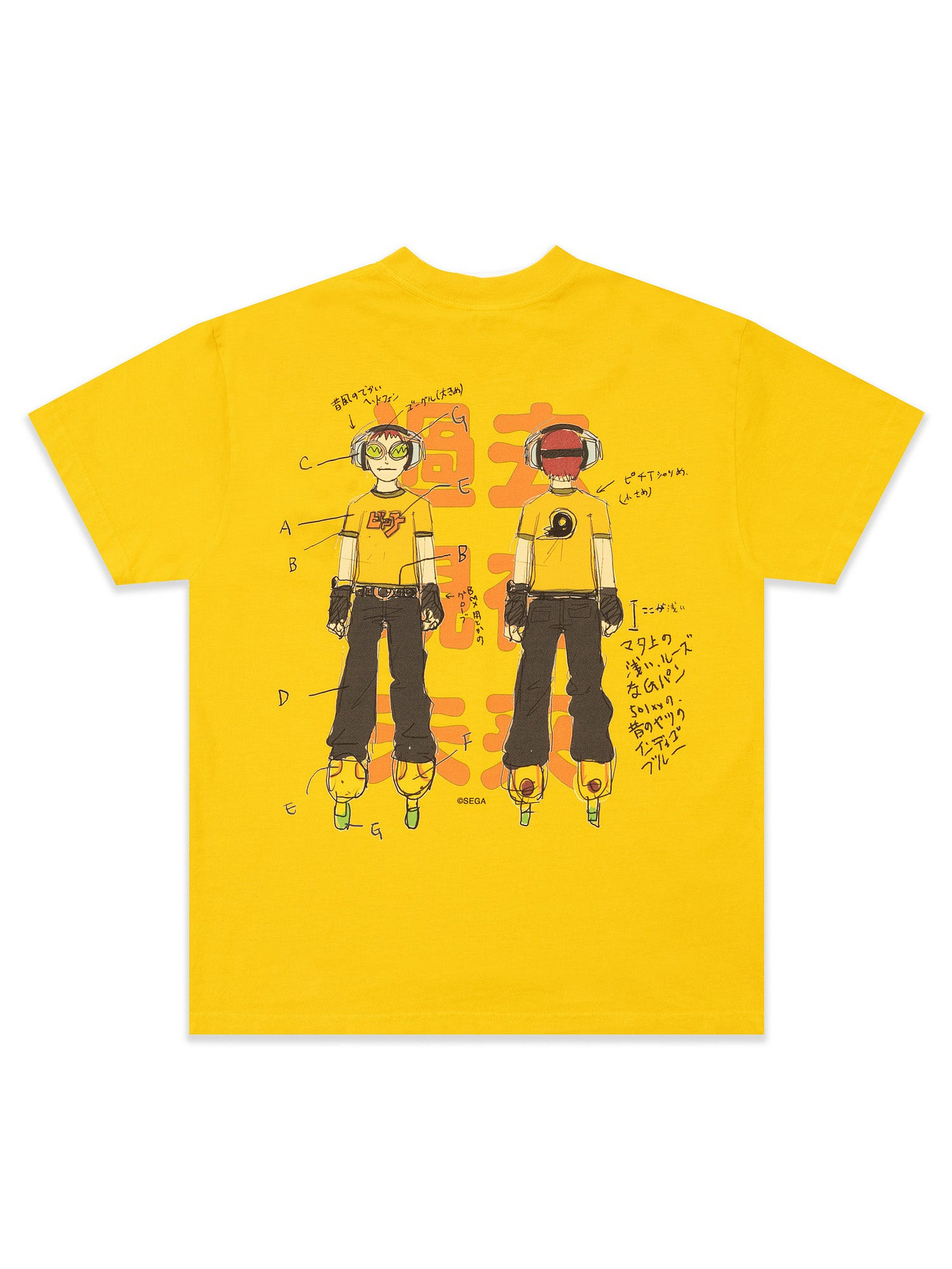
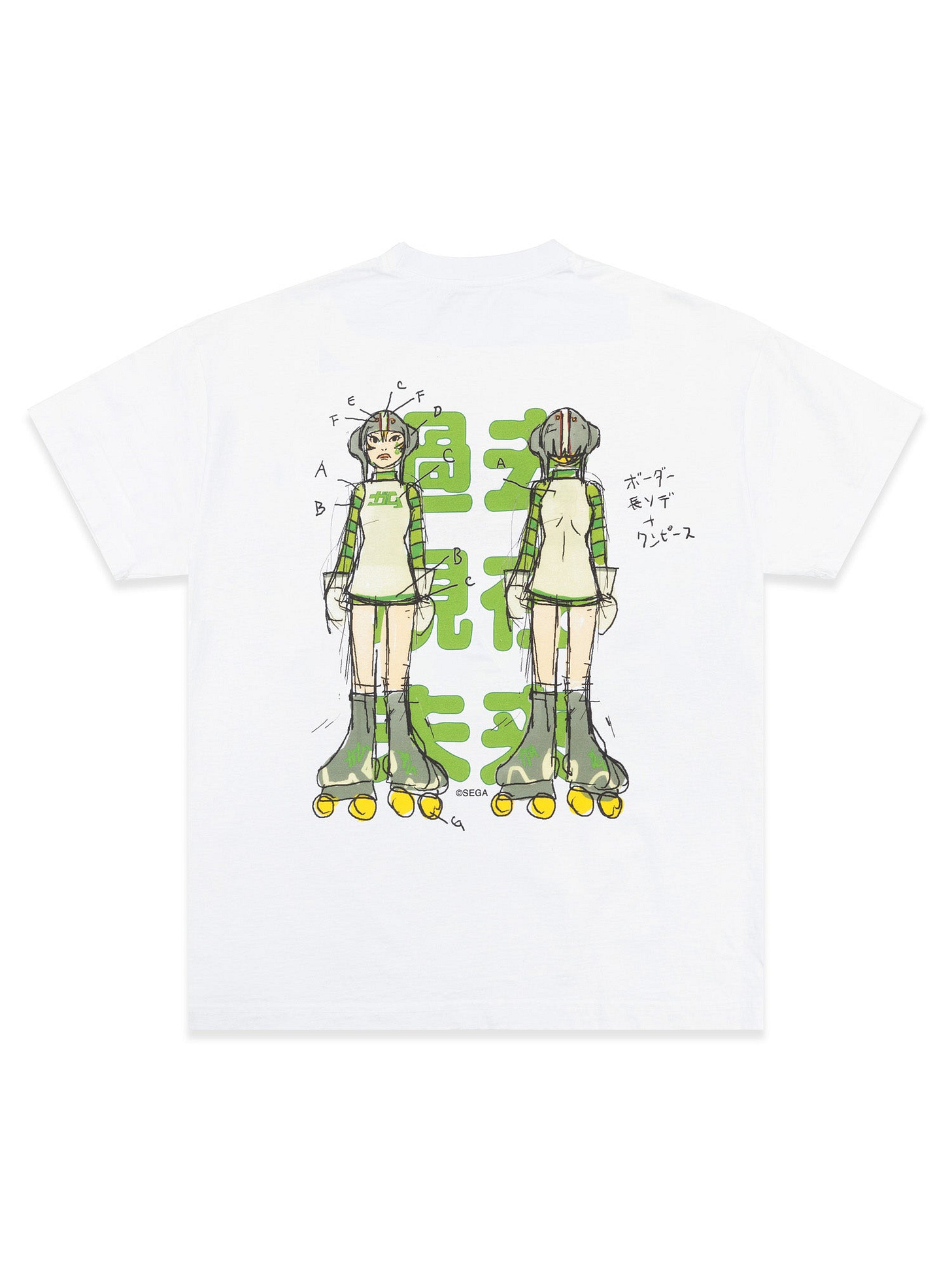
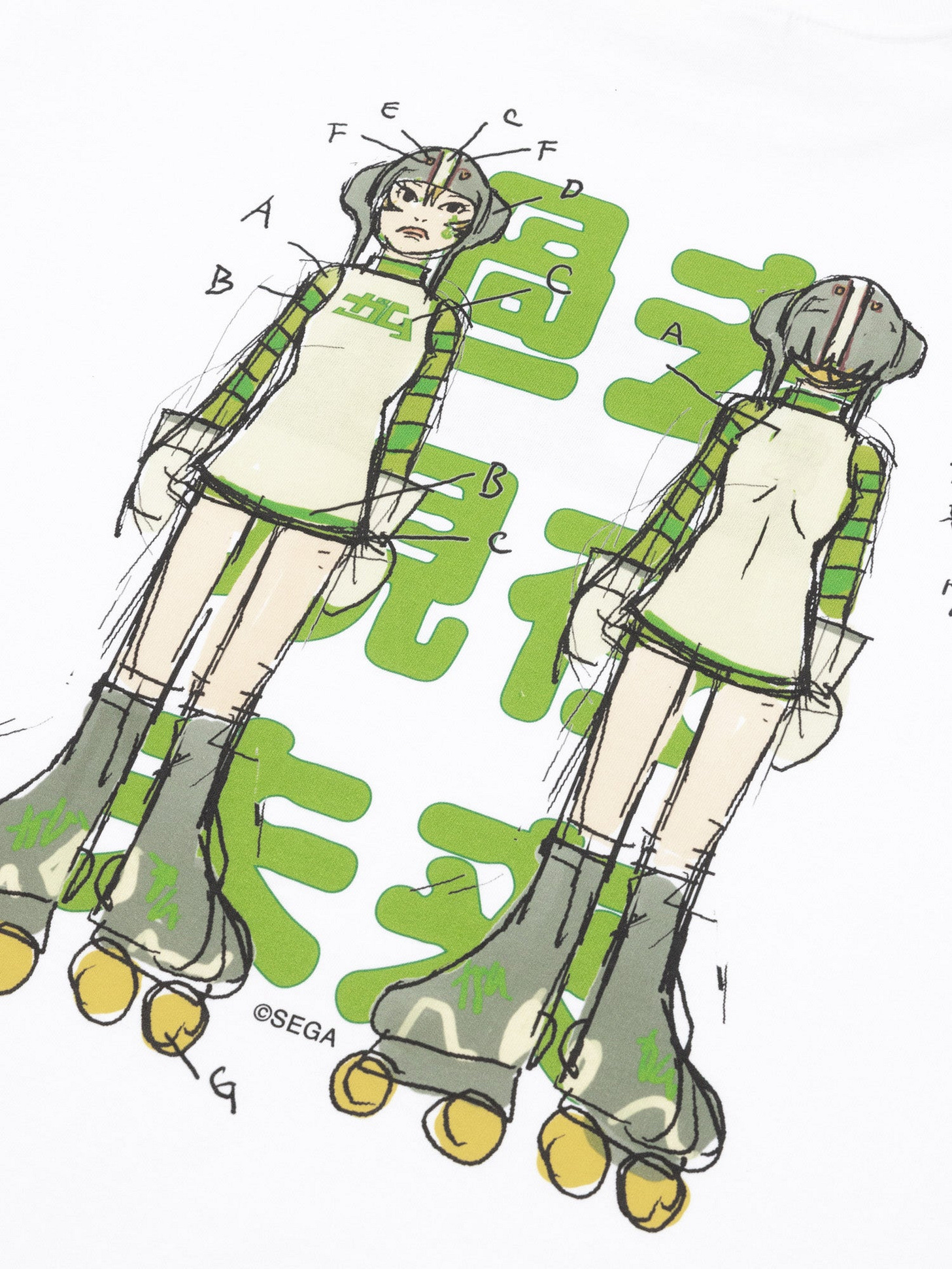
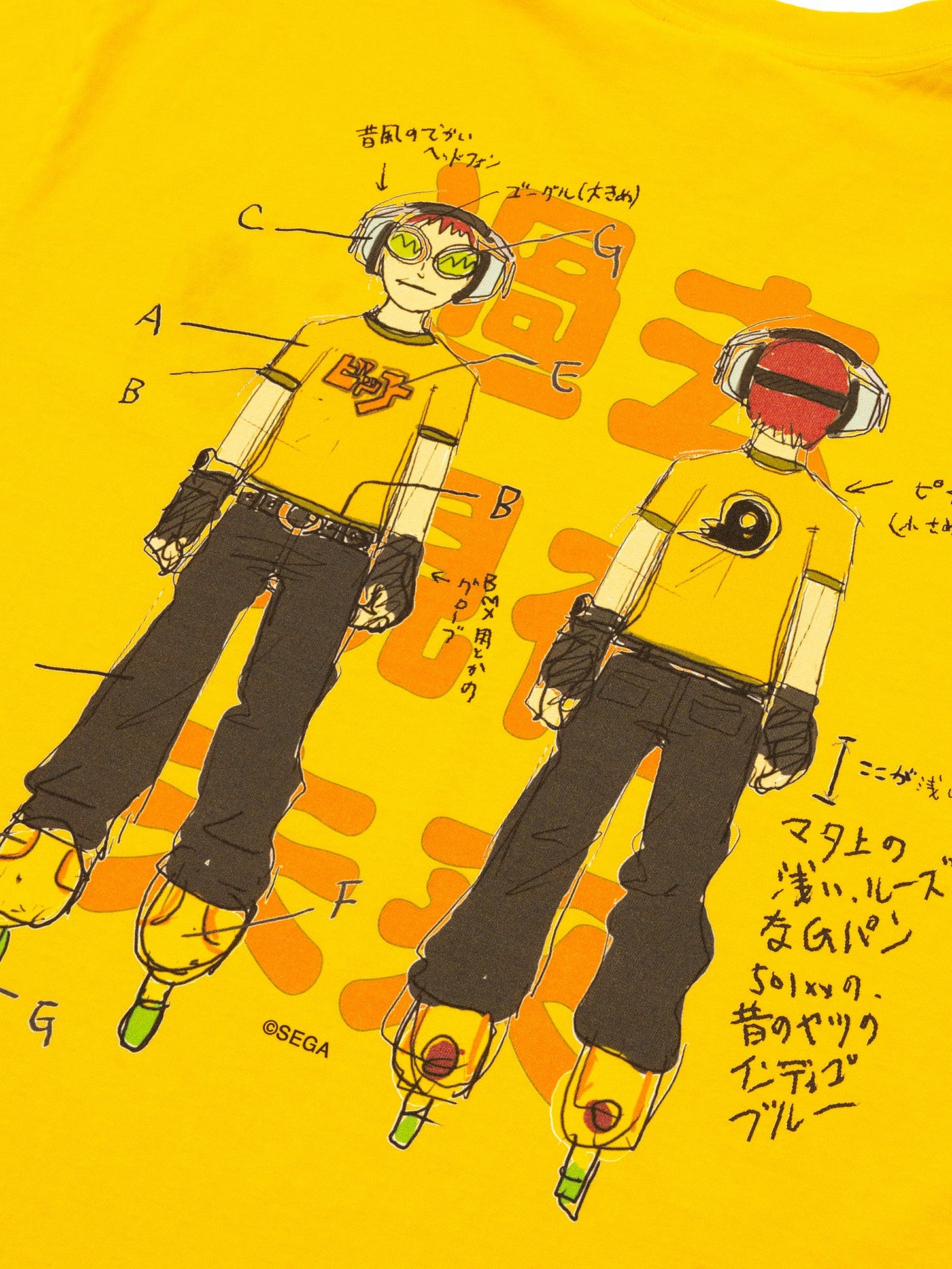
Fire drop